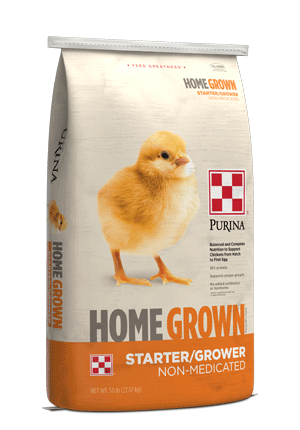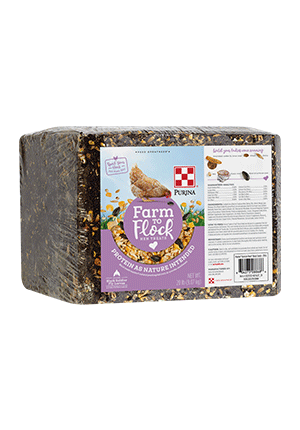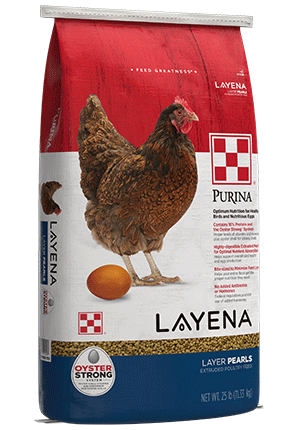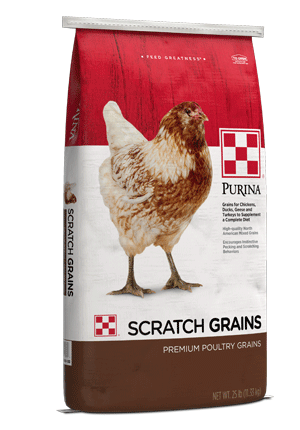
How to Keep Chickens Warm in Winter Weather
Starting a Flock : Considering Chickens
Starting a Flock : Environment
Starting a Flock : Caring for Chicks
Flock Management : Flock Health
Flock Management : Layer Nutrition
There’s nothing as cozy and snug as your hens in their winter chicken coop. But many flock raisers wonder how to keep chickens warm in winter. Follow our 10 cold weather flock tips and know a bird’s thick feathers are a natural protective coat, so most breeds are well-equipped for winter without the need for a chicken coop heater.
Here are 10 common questions about how to keep chickens warm in winter:
There’s no need to buy expensive heat lamps or a chicken coop heater for your flock. Chickens, especially cold-weather chicken breeds (see breed suggestions below), can withstand winter temperatures without supplemental heat. A chicken’s body temperature is around 106 degrees Fahrenheit, and they have their own protective layer of feathers to keep them warm.
If you feel it is necessary to provide a chicken coop heater, only provide enough heat to raise the temperature a few degrees. The hens will adjust to the cold temperature, but if it is 70 degrees Fahrenheit in the coop and 0 degrees Fahrenheit in the run, birds will not be able to regulate their body temperature.
Choosing a layer feed with the Purina® Oyster Strong® System will help your hens lay strong and stay strong all winter long. Which layer feed Oyster Strong® System is right for your flock?
Secondly, the blood entering the lower legs and feet is cooled by the blood returning to the heart. The blood returning is thus warmed by the blood going to the toes. The tissue receives just enough heat to avoid frostbite while also providing enough oxygen to keep their system functioning. So yes, let your chickens stay outside in the winter and enjoy the snow!
For sustained egg production, provide at least 16 hours of light per day. Use one incandescent 25-watt or LED 3- to 9-watt bulb per 100 square feet of coop space on an automatic timer.
Now that you know how to keep chickens warm in winter, you’re ready to level up your flock with Oyster Strong®. Sign-up for our Feed Greatness® Challenge and receive $14 worth of feed coupons.
Here are 10 common questions about how to keep chickens warm in winter:
 1. Is a heat lamp and chicken coop heater necessary?
1. Is a heat lamp and chicken coop heater necessary?
There’s no need to buy expensive heat lamps or a chicken coop heater for your flock. Chickens, especially cold-weather chicken breeds (see breed suggestions below), can withstand winter temperatures without supplemental heat. A chicken’s body temperature is around 106 degrees Fahrenheit, and they have their own protective layer of feathers to keep them warm.If you feel it is necessary to provide a chicken coop heater, only provide enough heat to raise the temperature a few degrees. The hens will adjust to the cold temperature, but if it is 70 degrees Fahrenheit in the coop and 0 degrees Fahrenheit in the run, birds will not be able to regulate their body temperature.
2. What to feed chickens in winter?
A common myth is to feed oatmeal to birds in the winter. This is not a beneficial treat for chickens. Oats contain types of fiber that chickens can’t digest, which can cause the contents of the digestive tract to thicken. This leads to a reduction in the bird’s ability to digest and absorb nutrients. Greens are also unnecessary. Hens may pick at hay and spread it around, but they are not going to eat it.Choosing a layer feed with the Purina® Oyster Strong® System will help your hens lay strong and stay strong all winter long. Which layer feed Oyster Strong® System is right for your flock?
- Purina® Layena® pellets or crumbles – Our most popular layer feeds
- Purina® Layena® Omega-3 – Includes added omega-3 fatty acids for your health
- Purina® Layena® Free Range – Includes insect protein
- Purina® Organic Layer Feed – Certified USDA Organic
3. How do you keep feed and water from freezing?
Consider heated waterers and plan to feed and water your flock more often when it’s below freezing. Energy needs increase in winter – animals expend a considerable amount of energy to stay warm and will eat more feed. Complete layer feeds include all the energy hens need. The 90/10 rule still applies in winter. Limit treats to less than 10 percent of your chickens’ overall diet and provide a healthy treat, such as Purina® Farm to Flock® Larvae for Ladies™ hen treats or Purina® Farm to Flock® Protein Blend for Hens treats.4. Can chickens stay outside in the winter?
Birds can tolerate snow, cold air and ice. There is very little muscle in the lower part of bird legs and feet. The movements are controlled by tendons that stretch from the upper part of the legs down to the toes.Secondly, the blood entering the lower legs and feet is cooled by the blood returning to the heart. The blood returning is thus warmed by the blood going to the toes. The tissue receives just enough heat to avoid frostbite while also providing enough oxygen to keep their system functioning. So yes, let your chickens stay outside in the winter and enjoy the snow!
5. Do chickens lay eggs in winter?
The shorter days of winter often signal time for an egg-laying break. Your ladies may stop laying eggs, lose old feathers and grow new ones. This annual slowdown is known as molt. Molt can last 8 to 12 weeks, and you’ll notice a decrease in egg production. Check out these three tips to help your molting chickens.For sustained egg production, provide at least 16 hours of light per day. Use one incandescent 25-watt or LED 3- to 9-watt bulb per 100 square feet of coop space on an automatic timer.
6. Do chicken eggs freeze?
Temperatures below freezing result in frozen eggs. As the egg freezes, the contents expand and will cause the egg to crack. You should plan on increasing your trips to the nesting boxes to help prevent cracked eggs.7. Should a winter chicken coop be draft-free?
Good ventilation in your winter chicken coop is key to a healthy coop environment, and that means you should not completely seal your coop. Some air needs to be exchanged to prevent ammonia build up. Open the top vent or higher windows slightly so fresh air can enter and stale air can exit.8. Should the winter chicken coop be dry?
While many humans enjoy a tropical, high-humidity environment during cold weather, your chickens will not. Moisture must be removed from the winter chicken coop by removing any wet spots daily. Provide more bedding than you would in other seasons, so birds have a place to burrow and stay cozy.9. Do chickens need more coop activities in winter?
Hens will spend more time in the coop, so offer enrichment activities. Logs, sturdy branches, old ladders or chicken swings work well to provide new entertainment. You can also place a Purina® Flock Block® supplement in the coop for a nutritious place for your hens to peck.10. What are some good cold weather chicken breeds?
If you live in a very cold climate, consider a cold-tolerant chicken breed like Araucana, Australorp, Silkie Bantam, Minorca, Orpington, Rhode Island Red, Barred Rock, New Hampshire Red, Delaware or Wyandotte. Your chicken’s thick feathers are a natural protective coat, so most breeds are well-equipped for winter weather.Now that you know how to keep chickens warm in winter, you’re ready to level up your flock with Oyster Strong®. Sign-up for our Feed Greatness® Challenge and receive $14 worth of feed coupons.





